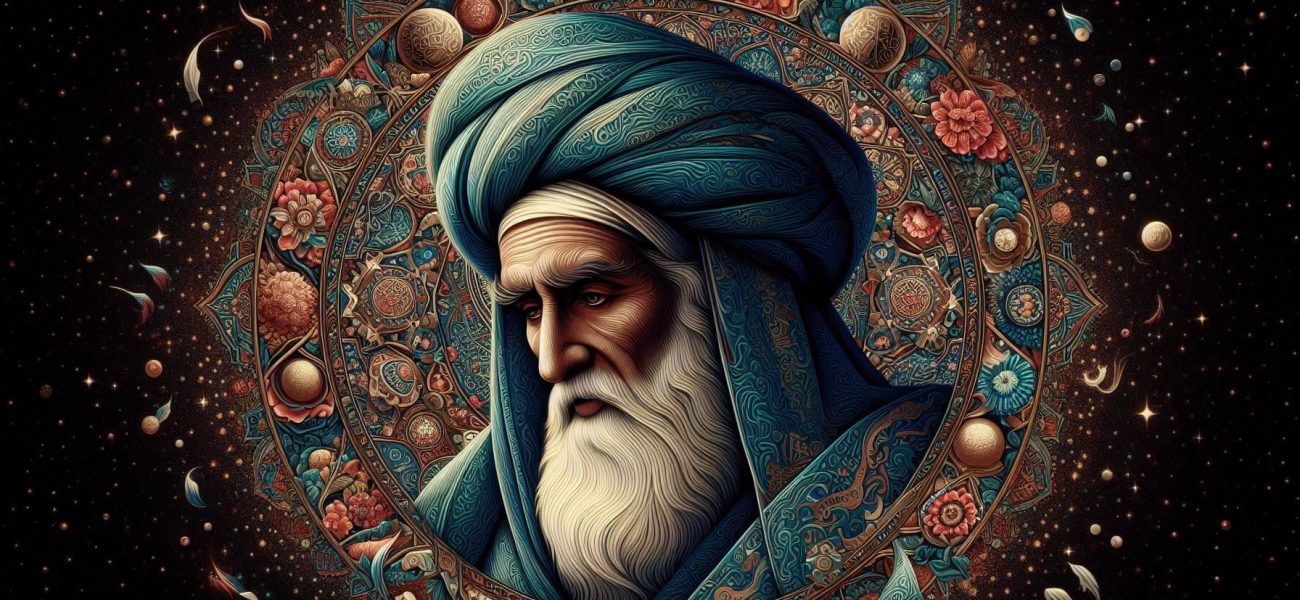By Dr. Mahmoud Reza Tehrani
Professor of Islamic Studies and History of Science, University of Tehran
In the pantheon of medieval Islamic scholars, few figures stand as tall as Abu Rayhan Muhammad ibn Ahmad Al-Biruni (973-1048 CE). Often referred to simply as Al-Biruni, he embodied the quintessential polymath of the Islamic Golden Age, making groundbreaking contributions across an astounding array of disciplines. As we examine his legacy through a contemporary lens, we find not merely a historical figure, but a pioneering scientist whose methodologies and discoveries continue to resonate with modern scientific practices.
Life
Born in the suburbs of Kath, the capital of Khwarezm (modern-day Uzbekistan), Al-Biruni’s early life coincided with a period of remarkable intellectual ferment in the Islamic world. The political instability of his time, rather than hindering his scholarly pursuits, seems to have enhanced his intellectual wanderlust. As a young scholar, he found himself caught in the political machinations between the Ma’munid rulers of Khwarezm and the expanding Ghaznavid Empire under Mahmud of Ghazna.
What distinguishes Al-Biruni’s biographical narrative from his contemporaries is his remarkable ability to transform political exile into scholarly opportunity. When Sultan Mahmud conquered Khwarezm in 1017, he took Al-Biruni to Ghazna (in modern-day Afghanistan). While nominally a captive, Al-Biruni turned this displacement into an unprecedented opportunity for scientific and cultural exploration, particularly in his studies of India.
Astronomy
Al-Biruni’s astronomical works represent perhaps his most significant scientific contribution. His approach to astronomical observation was revolutionary for its time, combining mathematical precision with innovative instrumental techniques. In his major astronomical treatise, “Al-Qanun al-Masudi” (The Masudic Canon), he presents a sophisticated mathematical model of the universe that improved upon Ptolemy’s work.
What sets Al-Biruni apart in astronomical studies was his insistence on empirical verification. He was among the first scientists to methodically question the Aristotelian vision of the cosmos. His observations led him to propose that the Earth rotates around its axis, a remarkably modern concept for his time. He calculated the Earth’s radius with unprecedented accuracy using original trigonometric methods, achieving a result remarkably close to modern measurements.
In his astronomical works, Al-Biruni also demonstrated an early understanding of what we now call the scientific method. He writes: “The thing which every student of nature must do is to state the facts as they are, without twisting them to match preconceived notions.” This empirical approach set him apart from many of his contemporaries who relied primarily on ancient authorities.
Refutation of Eternal Universe
Perhaps one of Al-Biruni’s most philosophically significant contributions was his sophisticated critique of the eternal universe theory. Unlike many of his contemporaries who approached this question purely from theological grounds, Al-Biruni developed a scientific and logical argument against the concept of an eternal universe.
In his work “Al-Āthār al-Bāqiya” (Chronology of Ancient Nations), he presents a compelling argument based on astronomical observations and mathematical logic. He reasoned that if the universe were eternal, the accumulated effects of precession would have resulted in observable consequences that were not present. This argument demonstrates his remarkable ability to unite empirical observation with theoretical reasoning.
Physics
Al-Biruni’s contributions to physics were groundbreaking, particularly in the study of specific gravity. He developed methods for measuring the specific gravity of minerals and metals that were not improved upon until the 18th century. His work “Determination of the Coordinates of Positions for the Correction of Distances between Cities” contains detailed discussions of specific gravity, including a description of a precise method for measuring it using a conical vessel.
He also made significant contributions to the study of light and optics. Al-Biruni correctly explained the working of natural springs using the concept of hydrostatic pressure, and he understood that acceleration is connected with non-uniform motion, foreshadowing some of Newton’s insights by several centuries.
Geography and Geodesy
Al-Biruni’s geographical works represent some of the most accurate and comprehensive studies of their time. He developed novel techniques for measuring the Earth’s circumference, achieving results that were remarkably accurate for his era. His method involved measuring the height of a mountain using a sophisticated mathematical technique that he developed.
In his geographical studies, Al-Biruni introduced innovative cartographic techniques and was among the first to systematically use triangulation for measuring distances. His work “Kitab al-Tahdid” contains detailed discussions of mathematical geography and geodesy that remained unsurpassed for centuries.
Pharmacology and Mineralogy
Al-Biruni’s “Kitab al-Saydana” (Book of Pharmacology) represents one of the most comprehensive treatises on pharmacology and mineralogy from the medieval period. What sets this work apart is its systematic approach to classification and description. He not only cataloged hundreds of medications and minerals but also provided detailed information about their sources, preparation methods, and therapeutic uses.
In mineralogy, he was the first to recognize that specific gravity depends on the volume of water displaced, and he developed sophisticated methods for determining the density of precious stones and metals. His descriptions of mineral properties were so precise that modern mineralogists can often identify specific minerals from his descriptions.
History and Chronology
Al-Biruni’s historical works demonstrate his remarkable commitment to objective scholarship. In “Al-Āthār al-Bāqiya,” he presents a comparative study of calendars used by different cultures, including the Persian, Greek, and Indian systems. His approach to historical documentation was revolutionary for its time, emphasizing the importance of primary sources and direct observation.
What distinguishes Al-Biruni’s historical writings is his insistence on verification and his skepticism toward unsubstantiated claims. He writes: “To execute our project, we need records of past events that are free from both the prejudices of the teller and the weakness of transmission.”
History of Religions
Al-Biruni’s approach to the study of religions was remarkably modern and objective. His work “Kitab al-Hind” (The Book of India) presents perhaps the first systematic study of Indian religions by a non-Indian scholar. What makes his religious studies particularly noteworthy is his commitment to objectivity and his emphasis on direct observation and primary sources.
He learned Sanskrit to study Indian texts in their original language and insisted on presenting religious beliefs as their adherents understood them, rather than through the lens of criticism or apologetics. This approach was revolutionary for his time and presages modern anthropological methods.
Anthropology
Although the term “anthropology” did not exist in Al-Biruni’s time, his methodology and approach to studying different cultures qualify him as one of the world’s first anthropologists. His work in India, in particular, demonstrates sophisticated ethnographic techniques that wouldn’t become standard practice until centuries later.
In studying Indian culture, Al-Biruni learned Sanskrit, translated important texts, and lived among the people he studied. He documented not only religious practices but also social customs, scientific knowledge, and philosophical systems. His approach was remarkably free from the cultural chauvinism that often characterized medieval writers describing foreign cultures.
Indology
Al-Biruni’s contributions to Indology are particularly significant. His “Kitab al-Hind” remains one of the most important sources for understanding medieval India. What sets his work apart is his systematic approach to understanding Indian culture, religion, and science.
He was perhaps the first scholar to engage in a genuine comparative study of Indian and Greek scientific traditions, noting both similarities and differences without privileging either tradition. His translations of Sanskrit texts into Arabic helped preserve important Indian scientific works and facilitated intellectual exchange between these civilizations.
Works
Selection of Extant Works
Al-Biruni was a prolific author, with sources attributing anywhere from 146 to 180 works to him. Among his most significant surviving works are:
- “Al-Āthār al-Bāqiya” (Chronology of Ancient Nations)
- “Kitab al-Hind” (The Book of India)
- “Al-Qanun al-Masudi” (The Masudic Canon)
- “Kitab al-Saydana” (Book of Pharmacology)
- “Kitab al-Tafhim” (Book of Instruction in the Elements of the Art of Astrology)
- “Kitab al-Tahdid” (The Determination of the Coordinates of Positions for the Correction of Distances between Cities)
Persian Works
While most of Al-Biruni’s surviving works are in Arabic, he also wrote several important works in Persian, his native language. His Persian works include translations of Indian texts and original compositions on astronomy and astrology. The significance of his Persian works lies not only in their content but also in their role in developing Persian as a language of scientific discourse.
Legacy
Al-Biruni’s legacy extends far beyond his immediate historical context. His empirical approach to scientific inquiry, his emphasis on direct observation and measurement, and his commitment to cultural understanding all resonate strongly with modern scientific and scholarly practices.
In astronomy, his calculations and observations remained unsurpassed for centuries. His methods for measuring specific gravity were not improved upon until the 18th century. His anthropological approach to studying other cultures prefigured modern ethnographic methods by nearly a millennium.
Perhaps most significantly, Al-Biruni’s work exemplifies the integration of scientific inquiry with humanistic understanding. He demonstrated that rigorous scientific methodology could coexist with deep respect for different cultural traditions and belief systems.
In Popular Culture
While Al-Biruni’s presence in popular culture may not match his scholarly significance, there has been growing recognition of his contributions in recent years. Several educational institutions and research centers across the Islamic world bear his name. The lunar crater “Al-Biruni” and the asteroid “9936 Al-Biruni” were named in his honor.
In Iran and Central Asia, Al-Biruni is celebrated as a national hero and a symbol of scientific achievement. His image has appeared on postage stamps and currency in several countries, and his life has been the subject of numerous books, documentaries, and academic conferences.
Al-Biruni stands as a testament to the heights of intellectual achievement possible when scientific rigor meets cultural openness. His work demonstrates that the pursuit of knowledge knows no cultural or religious boundaries. In our current age, marked by cultural tensions and scientific skepticism, Al-Biruni’s example of combining rigorous scientific methodology with cultural sensitivity and intellectual humility remains deeply relevant.
His legacy challenges us to think beyond our own cultural assumptions and to approach the study of both natural phenomena and human societies with empirical rigor and respectful curiosity. As we face contemporary challenges requiring both scientific expertise and cross-cultural understanding, Al-Biruni’s intellectual legacy offers valuable lessons for scholars and scientists today.




